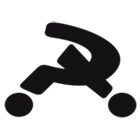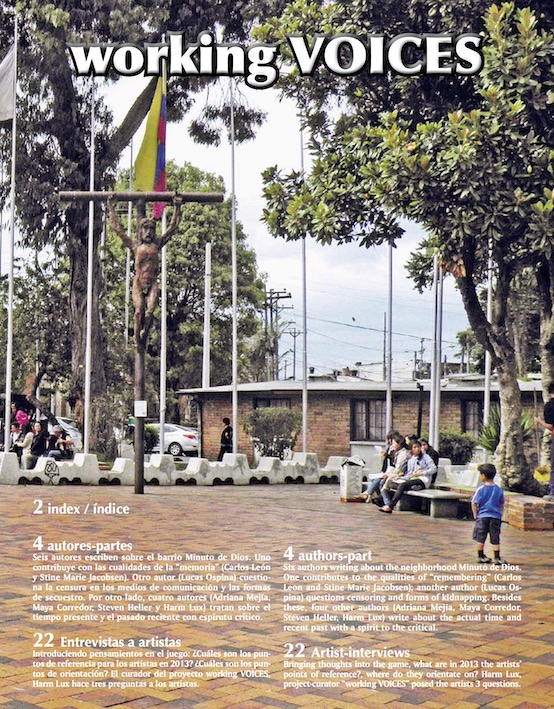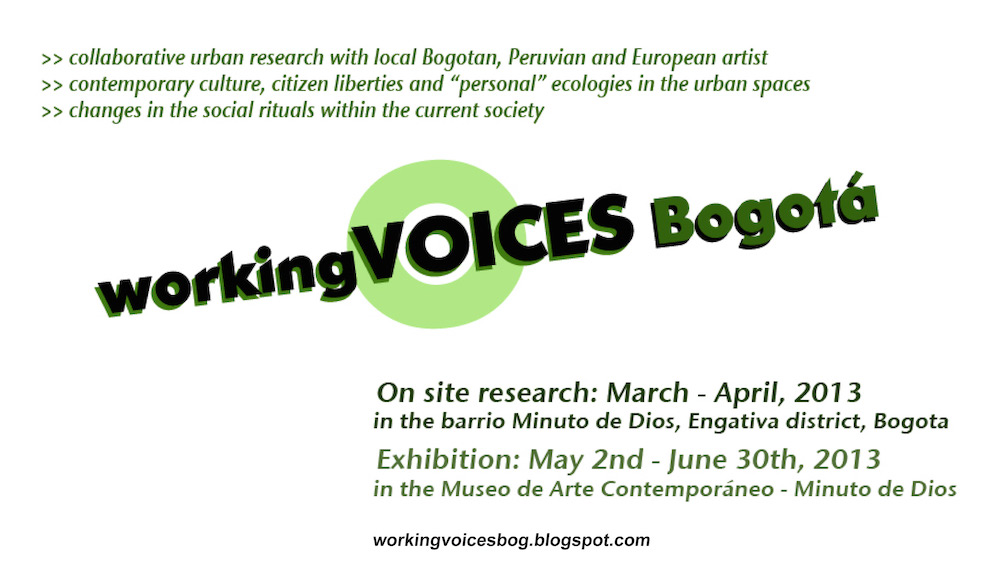// an apparent shanty built on the top of Bogota´s Museum for Contemporary Art, shows the self-constructing popular model of Bogota´s urban sprawl. Also reflecting on the current situation of the surroundings neighborhoods where the Bogota-MAC was built around the 1960´s.
A reflection on the poor hinterland´s migration, due economical needs and escaping from the inner war violence. This condition is similar to many Latin American main cities. //
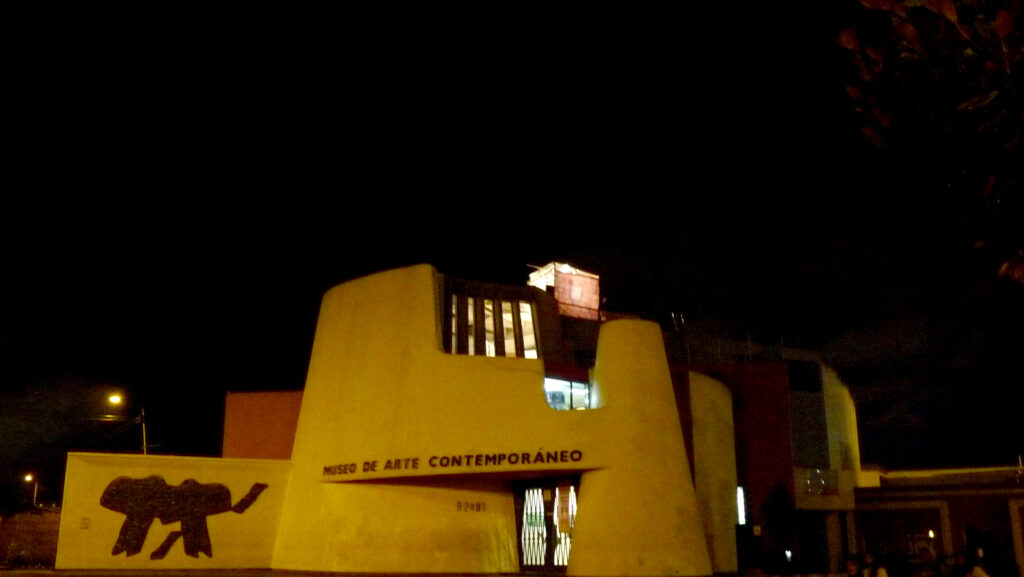
EXTENSIÓN MAC-BOGOTÁ
installation and space of use.
A project by Carlos León-Xjiménez with the collaboration of Rodrigo Derteano in the framework of the workingVOICES project.
Bogota Museum of Contemporary Art, Colombia
- Project reference at the museum´s web (in Spanish)
- workingVOICES Bogota web
- EXTENSIÓN MAC-BOGOTÁ reference in local Bogota TV program (26-05-2013) See: 20´40″-21´18″
Opening celebration on the rooftop within the “cambuche” (slum) on top of the museum with dj session.
The installation was offer as an unexpected space to host a possible Bogota Center for Post-Contemporary Culture, in symbiotic (and parasiting) relation with the museum below. If contemporary art took place in the museum, on the rooftop cabin on-going alternative cultural practices can have space (with great view of the surrounding landscape!).
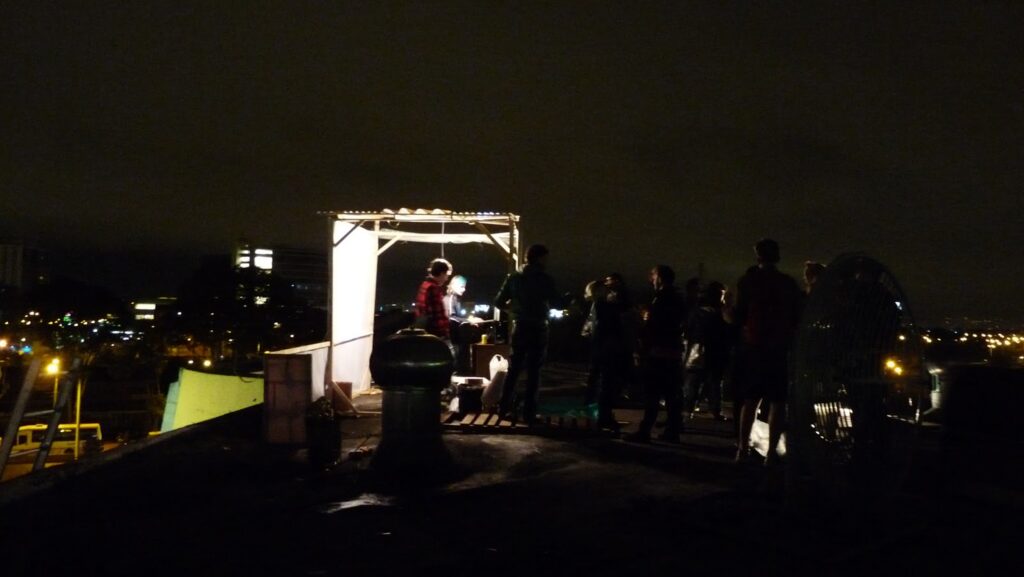
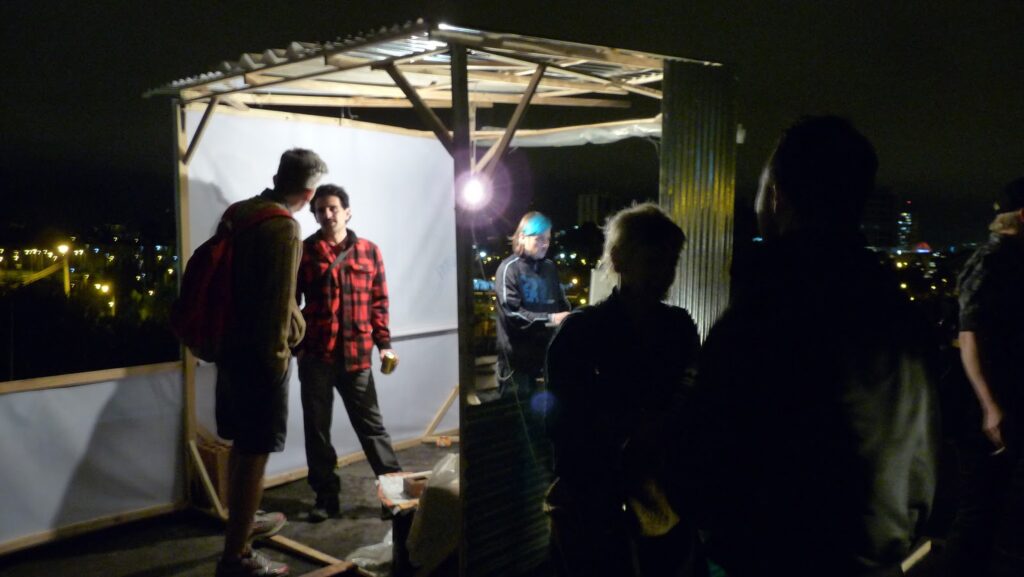
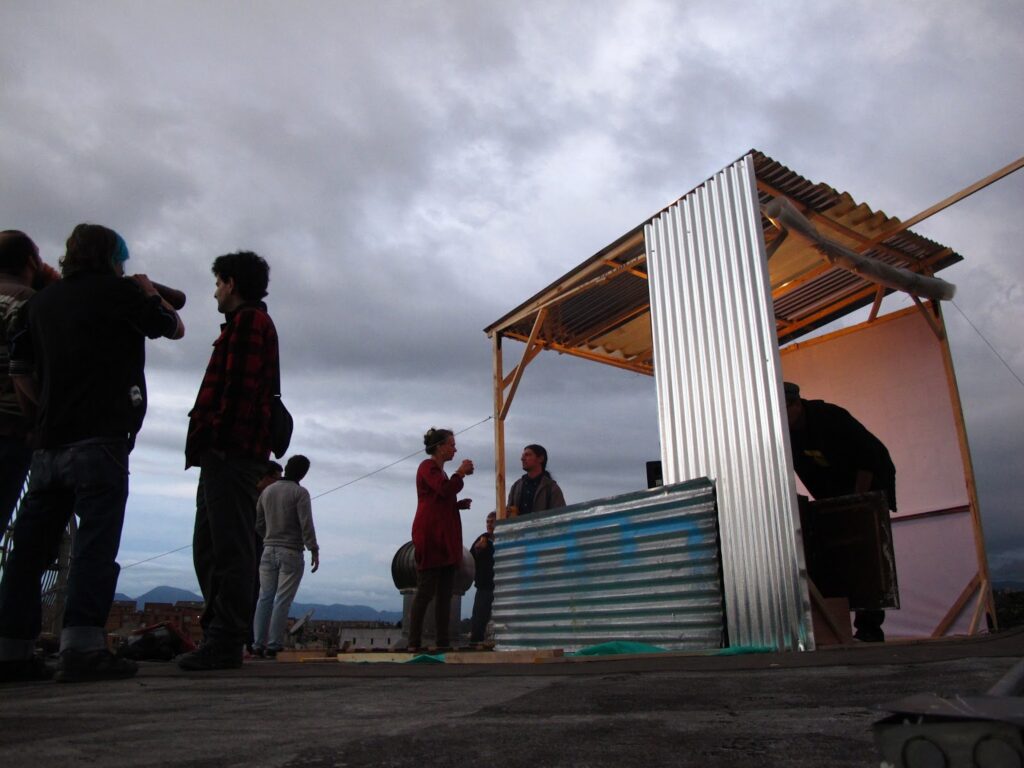
3 images on the research process and later development on top of the museum´s building



Project done in the framework of workingVOICES Bogota, by curator Harm Lux. (in English + Spanish)
ENGLISH
Testimony on the workingVOICES project
Carlos León-Xjiménez (PE/DE)
ON ART RESEARCHES OUT OF THE COMFORT ZONE
In terms of research-based projects in the field of the contemporary visual arts, I wonder how this experience has been pushing further the limits of what normally is understood as collaboration. Collaboration and participation have been deep discussed in the last decade, but pointing out the utilitarian way it has been used by governmental agencies to avoid responsability, outsourcing the decision to community organizations.
In the frame of this experience, workingVOICES has been rehearsing methodology on how to create social and cultural bonds in order to reflect on the own living environment, with
critical and artistic positions, reframing what normally is understood as “local culture”.
The related work by artist of the neigborhood, another people from other areas of Bogota city, Peruvians (as Latin Americans) and Europeans, was challenged to reflect and think about on what really matters and can be appreciated as
contemporary identities from the urban sprawl.
The language barriers and conceptual differences were synthetized by work processes that negotiated the sense and what was important to be highlighted, also reminding the locals about the particularities of their own history and tra-
ditions. This project has shown a particular way to create engagement, pointing out that art can be understood as a tool to sketch a diagnosis of ourselves. And this “ourselves” has also to do with the perception of the invited European and Peruvian artist, in the way they found similarities but also differences with their own living environments and
daily urban routines.
What at the beginning could be perceived as intercultural misunderstandings, become the raw material to negotiate the common sense… bringing the dialogue to a further step of what links the own interest and what can be a tool to be shared with the others. In that sense, experimenting out of the zone of comfort implied to take risk, shifting or creat-
ing new tools according to the required needs to be solved. In this way I perceived the behavior by the participating artist, assuming the challenge for a creative process out of a well-known and controlled environment.
This field work experience and the relation with a new city has also to do with our current experience of mobility, but beyond the transient condition and the ephemeral connection with locals, this experience has to do with new learnings from both parts, and the sharing of ways of perceive the art methods.
I pointed out the creation of methodology within this project: it ́s the character of a cultural immersion assuming to experience the other. But also the way the working team of the Museum learned with us on the creation of participation and new publics with only reframing and analyzing the local culture.
Beyond framed identities, the project did not proposed fixed images, but cross-over and displacement strategies, with whom to reframe what is urgent and important, at least at the current moment.
CASTELLANO
Testimonio en torno al proyecto workingVOICES
Carlos León-Xjiménez (PE/DE)
SOBRE INVESTIGACIONES ARTÍSTICAS FUERA DE LA ZONA DE CONFORT
En cuanto a los proyectos basados en la investigación en el campo de las artes visuales contemporáneas, me pregunto cómo esta experiencia ha ido ampliando los límites de lo que normalmente se entiende por colaboración. La colaboración y la participación han sido objeto de un profundo debate en la última década, pero señalando la forma utilitaria en que ha sido utilizada por los organismos gubernamentales para eludir la responsabilidad, externalizando la decisión a las organizaciones comunitarias.
En el marco de esta experiencia, workingVOICES ha estado ensayando metodología sobre cómo crear vínculos sociales y culturales para reflexionar reflexionar sobre el propio entorno vital, con
posiciones críticas y artísticas, replanteando lo que normalmente se entiende por “cultura local”.
El trabajo conjunto de artistas del barrio, de otras zonas de la ciudad de Bogotá, peruanos (como latinoamericanos) y europeos, fue un reto para reflexionar y pensar sobre lo que realmente importa y puede ser apreciado como identidad contemporánea desde la dispersión urbana.
identidades contemporáneas de la mancha urbana.
Las barreras idiomáticas y las diferencias conceptuales fueron sintetizadas por procesos de trabajo que negociaron el sentido y lo que era importante destacar, recordando también a los locales las particularidades de su propia historia y tra-
diciones. Este proyecto ha mostrado una forma particular de crear compromiso, señalando que el arte puede entenderse como una herramienta para esbozar un diagnóstico de nosotros mismos. Y este “nosotros mismos” también tiene que ver con la percepción de los artistas europeos y peruanos invitados, en la forma en que encontraron similitudes pero también diferencias con sus propios entornos de vida y rutinas urbanas diarias.
rutinas urbanas cotidianas.
Lo que al principio podría percibirse como malentendidos interculturales, se convierte en la materia prima para negociar el sentido común… llevando el diálogo a un paso más allá de lo que vincula el propio in y lo que puede ser una herramienta para compartir con los con los demás. En ese sentido, experimentar fuera de la zona En este sentido, experimentar fuera de la zona de confort implica arriesgarse, cambiar o crear nuevas herramientas en función de las necesidades.
o crear nuevas herramientas en función de las necesidades a resolver. De esta manera percibí el comportamiento del artista participante, asumiendo el reto de un proceso creativo fuera de un entorno conocido y controlado.
Esta experiencia de trabajo de campo y la relación con una nueva ciudad también tiene que ver con nuestra experiencia actual de movilidad, pero más allá de la condición transitoria y la conexión efímera con los locales, esta experiencia tiene que ver con nuevos aprendizajes de ambas partes, y el intercambio de formas de percibir los métodos artísticos.
Señalé la creación de metodología dentro de este proyecto: ́s el carácter de una inmersión cultural asumiendo experimentar al otro. Pero también la forma en que el equipo de trabajo del Museo aprendió con nosotros sobre la creación de participación y nuevos públicos con sólo reencuadrar y analizar la cultura local.
Más allá de las identidades enmarcadas, el proyecto no propuso imágenes fijas, sino estrategias de cruce y desplazamiento con las que replantear lo que es urgente e importante, al menos en el momento actual.
